The first Friday in June is set aside for National Doughnut Day, a name which sounds so gimmicky it could be accused of being found on the window of a grab-and-go pastry shop. But National Doughnut Day has its origins in the Great Depression when the Salvation Army in Chicago sold doughy sweet treats to help those in need and honor their members who served doughnuts to soldiers during World War I.
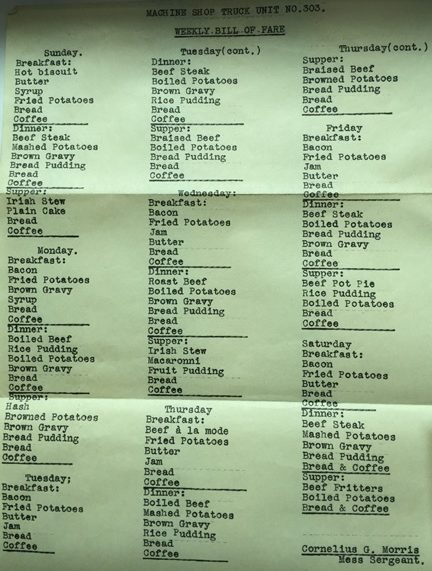 I know what you’re thinking. Why were doughnuts such a big deal during World War I? Let’s take a look at the Salvation Amy and their loyal legion of Doughnut Dollies and Lassies.
I know what you’re thinking. Why were doughnuts such a big deal during World War I? Let’s take a look at the Salvation Amy and their loyal legion of Doughnut Dollies and Lassies.
Put yourself in the boots of a Great War soldier. You are far from home, in a strange country and helping the allied advance. Or you’re working tirelessly in a logistical role to keep all the troops moving, fed and healthy. Let’s take a look at what you may eat during the week using this menu from the 303 Motor Repair Unit stationed in France in 1918. Your daily meals consist of beef, potatoes, gravy, bread, coffee, maybe some sort of rice or bread pudding and occasionally some sort of biscuit or jam. Not the stuff your mom or wife would make at home. And while the jam and occasional puddings are nice, they are not the substantial sweet desserts you would have found on the family dinner table or at a church social.
That’s where the Salvation Army Doughnut Dollies and Lassies swoop in to save the day.
Over one hundred Salvation Army women traveled beyond the war zones of Europe brewing coffee and cutting, frying and baking free cookies, pies and doughnuts to service people free of charge. An extra cup of coffee, a sweet treat, a little conversation and talking to someone of the opposite gender was a personal boost for soldiers and an overall morale boost for the war effort.
And that little hole in the middle of the doughnut? That feature was added to doughnuts by Salvation Army volunteers during World War I for soldiers to have a better grip on their baked goods. At home, traditional doughnuts were twisted, which allowed them to turn over during the frying process, or a small cake similar to the “basketball” shaped doughnuts you may see on supermarket and bakery shelves today.
The women in charge of these operations did not provide baked goods in a traditional restaurant or storefront. They traveled under the protection of the US Army and established camp kitchens for baking, deep frying and distributing their items to soldiers within close range of military activity. You can watch Salvation Army volunteers at work in this National Archives footage rom the 28 to 57-second marks. Some operations supplied as many as 2,000 to 5,000 doughnuts, rolls, cakes and pies each day. National Archives II in College Park, Maryland, is home to a wide variety of photographs that chronicle one visit from Salvation Army volunteers. These photos show Gladys and Irene McIntyre (sisters), Myrtle Turkington, and Stella Young serving doughnuts and coffee to soldiers of the 26th Division in Ansonville, France.
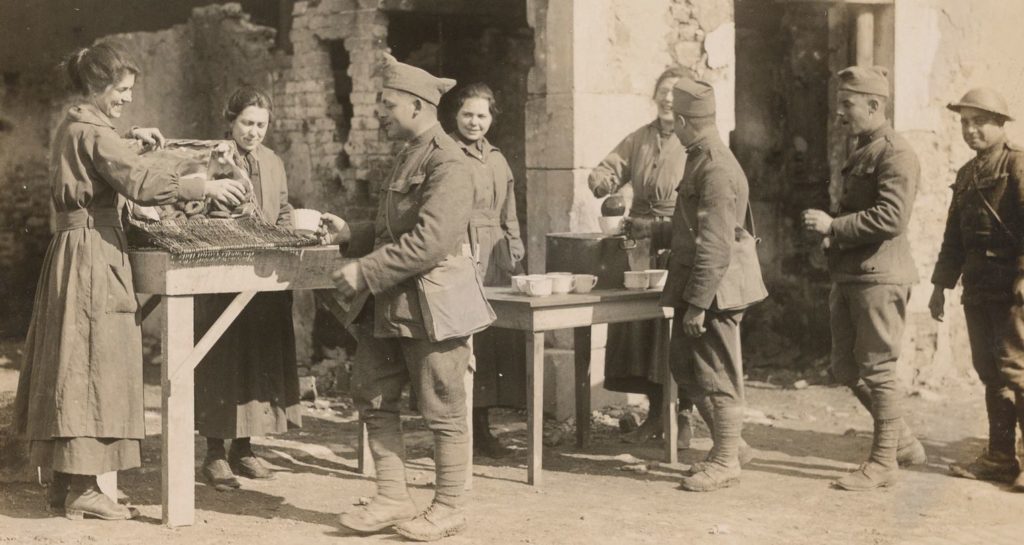
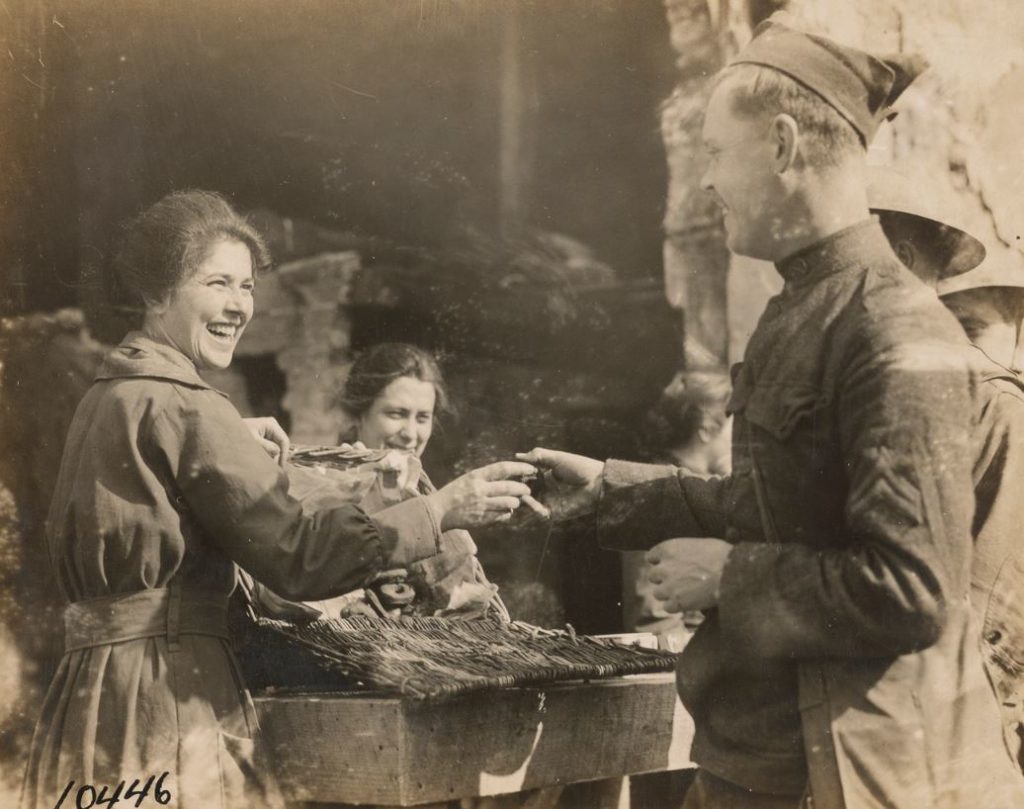
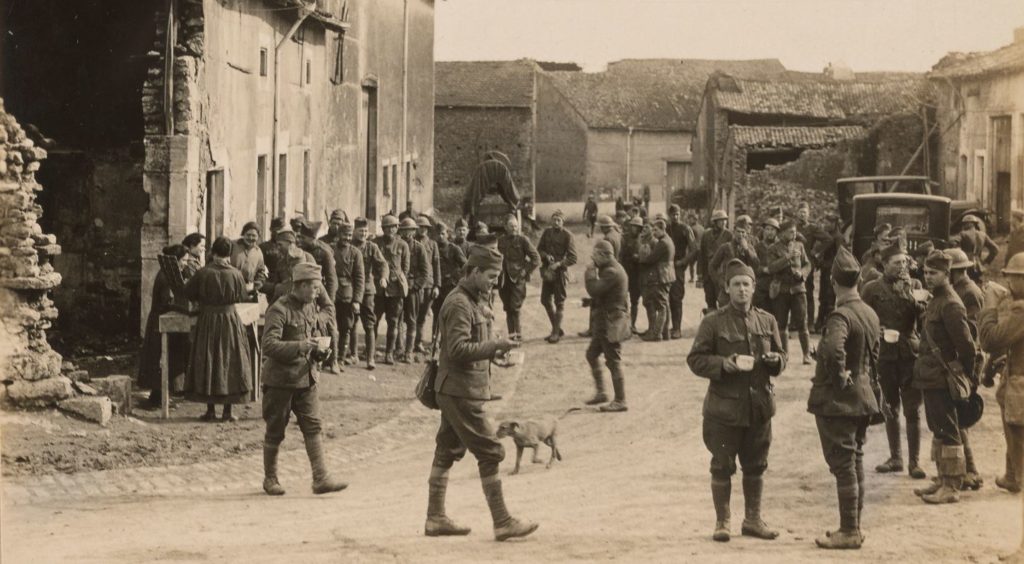
The association between doughnuts and Salvation Army became so intertwined, it inspired a pop tune immortalizing the service of these brave ladies. You can hear the song for yourself online on YouTube.
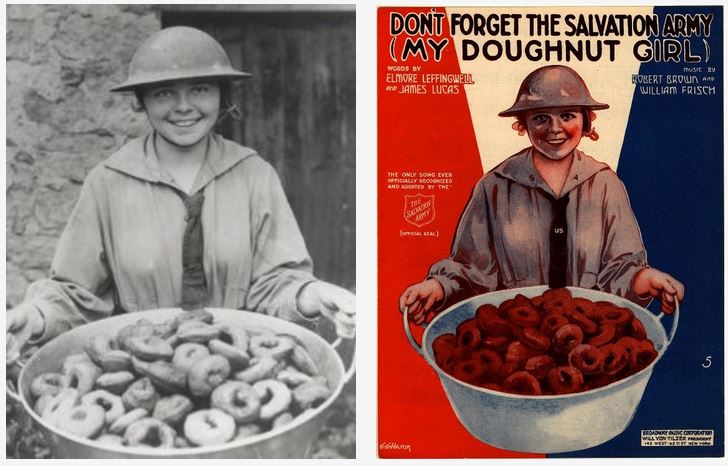
Salvation Army member Stella Young photographed with a batch of doughnuts became the face immortalized in a popular wartime tune.
When the Chicago branch of the Salvation Army was looking for a 1938 fundraiser to help needy families and commemorate its legion of volunteers and members, the humble holed doughnut was a natural choice. Today, you’ll find organizations using doughnuts to “raise dough” for their causes, so the legacy of the Salvation Army Doughnut Dollies and Lassies lives on.
If you’re looking to up your game in the kitchen, here is a transcription of the original Salvation Army doughnut recipe used during the Great War. This version was printed in a 1921 book complied by the Danvers Township Home Bureau Unit (Danvers, Illinois) for their Home Bureau and Community Cook Book. If you are brave enough to give this recipe a try, let us know how it turned out!
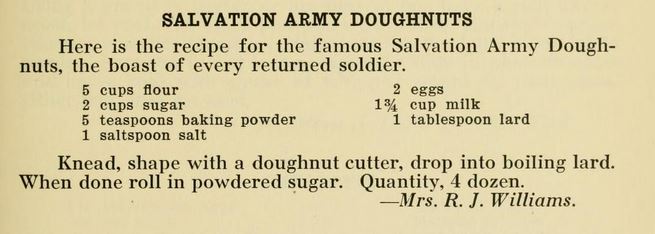
Wash Your Hands and Be Well,
Debra
